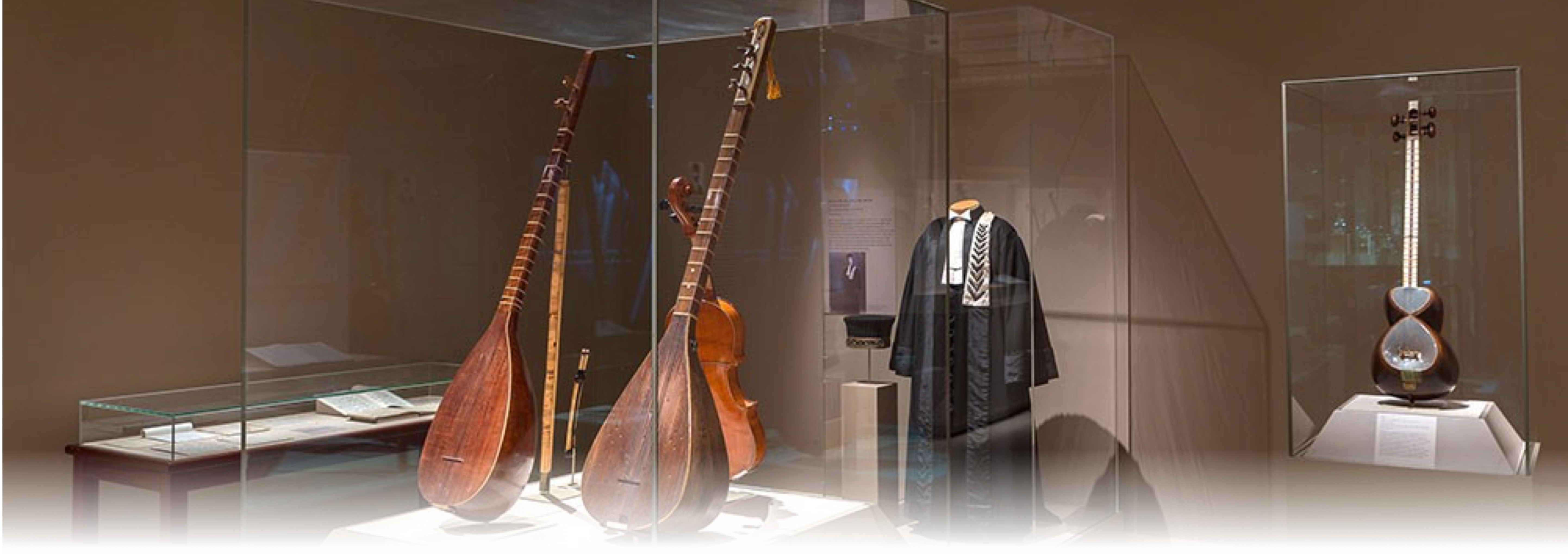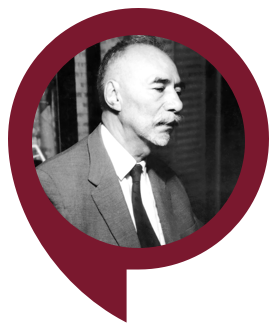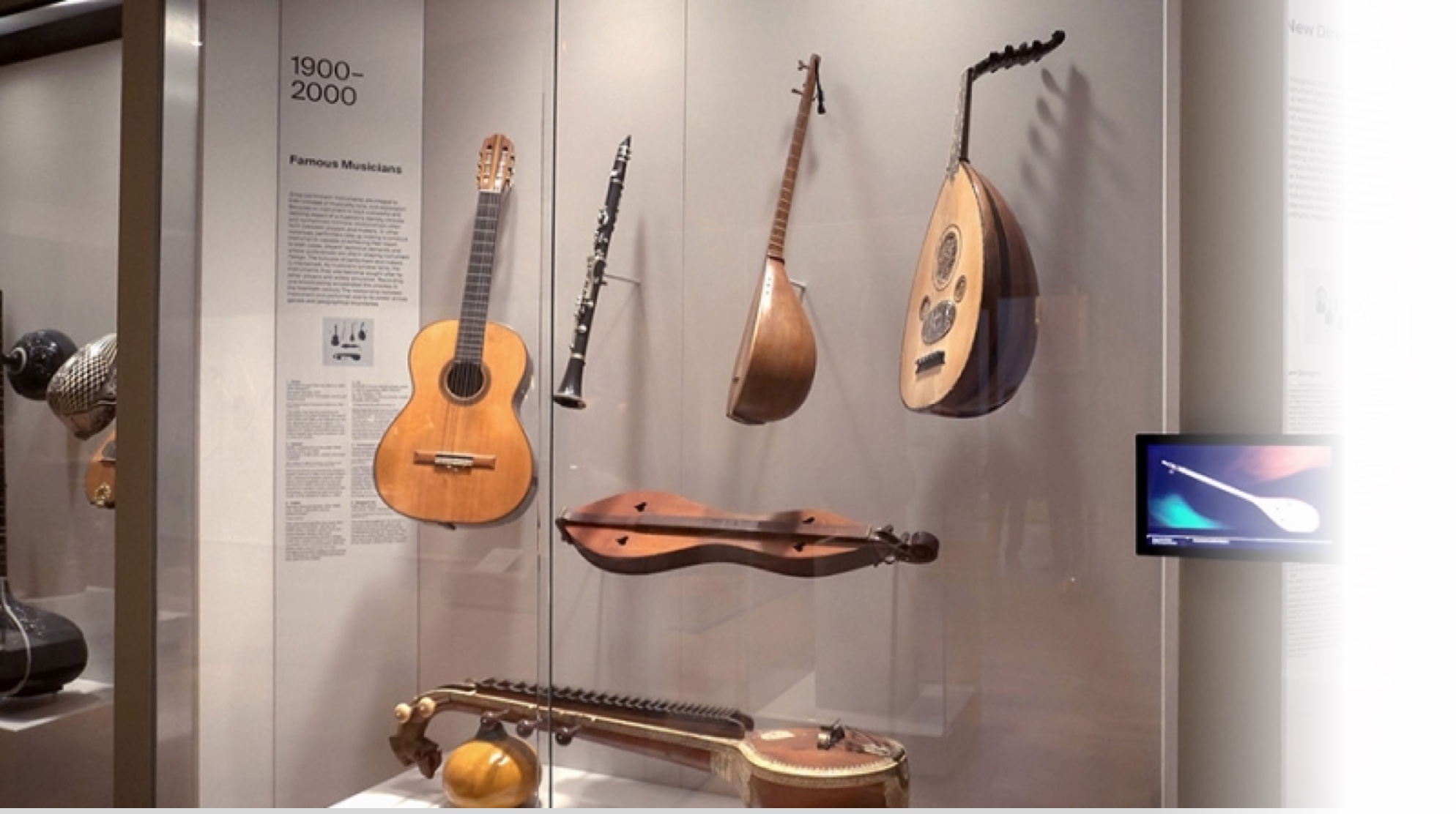Exhibitions
The Life and Work of Ostad Elahi
Paris from September 6 to October 31, 1995
The 1995 exhibition at the Chapelle de la Sorbonne in Paris, France commemorated the centenary of Ostad Elahi, influential thinker, jurist, author, and musician. In that year, to celebrate the centennial of his birth, symposia were convened at universities in Paris, London, Los Angeles, and New York, where authorities in science, jurisprudence, literature, and music gathered to reflect on the theme of Spirituality: Plurality and Unity.
Lectures and roundtables were presented on a variety of topics, including the unity of religions, ethics and jurisprudence, science and spirituality, and the relevance of contemporary mysticism. Sponsored by UNESCO, the French Ministry of Culture, and in collaboration with the Academy of Paris, a two-month exhibition was concurrently organized on The Life and Work of Ostad Elahi at the Chapelle de la Sorbonne.
Prepared for the international commemoration of the centenary of his birth the exposition at the Sorbonne brought together a great deal of biographical information, including a wealth of personal possessions from all periods of Ostad Elahi’s life and accounts by people who had known him personally. Especially important, from a biographical perspective, was the extensive collection of materials relating to his life (including his library, musical instruments, CDs of his music, videos, etc.) assembled for the commemorative exposition held at the Sorbonne in that year. Much of that exposition material is still accessible at the multilingual website established on that occasion (www.ostadelahi.com).
The exhibition chronicles the three major phases of his life - Dawn (1895-1920), Rising Sun (1920-1957), and Full Sun (1957-1974) - each of these periods featured a variety of personal objects, handwritten manuscripts, family photographs, and biographical anecdotes that allowed one to become acquainted with Elahi and the different periods of his life.
first time on this occasion. For the first time everyone could sit down and listen to Ostad Elahis music, which was played continuously in this room.
From early childhood, Ostad Elahi showed an exceptional musical talent. His father introduced him at the very early age to the art of Kurdish tanbur, a traditional lute whose melodies were used in spiritual gatherings of the Ahl-e Haqq for meditation and chanting purposes ever since the 14th century. As a child Nour Ali Elahi attracted the attention of musicians from different regions invited by his father to teach him their musical repertoire. Due to his exceptional musical aptitude and talent, he became an unequalled master of tanbur in the age of nine.
Up to the 20th century the instrument was considered so sacred that it was not to be played for people outside of the Ahl-e Haqq order. Its melodies and modes were so heavily guarded that they were only passed down from master to disciple. For thousands of years up to the beginning of the 20th century, the Kurdish/Persian tanbur only had two strings. In the early part of the 20th century, Nour Ali Elahi as peerless master of the tanbur added a third string which is tuned to the same pitch as the bottom string. He also added a 14th fret. Nour Ali Elahi’s innovations and contributions to the tanbur were extremely important and advanced the instrument to new levels. Ostad Elahi greatly expanded the technical possibility of the instrument, moreover he revolutionized the technic of playing the tanbur by making use of all the fingers of both hands. Later he additionally learned the classical repertoire of Persian music and learned to play the tar, the setar, reed flute, the daf, the kamantcheh.
Considering music above all as a means of reflection and contemplation, Ostad Elahi never performed in public, nor did he make any professional recordings of his music. He stated: “If played with a divine intention, music is the link that will connect us to the Source.” He thus played the tanbur only in small gatherings of family and close friends, where a mutual intentionality was inherent. Nevertheless some renounced musician had the advantage to listen to Ostad’s live tanbur playing. A selection of remarks and comments made by them are described below.
For example, Yehudi Menuhin, who is widely considered one of the greatest violinists of the 20th century, visited Ostad in the 1960s, commenting on his visit shortly after his stay:

“This extraordinary musician was able to maintain a tension and concentration that I never imagined possible in the limited interval of a fourth or a fifth . . . it seemed extraordinary to me that one’s musical interest could be maintained within the scope of such a narrow interval.
Never had I heard anything like it; it is the first time that I experienced such an effect. Never had I experienced a musical piece that stayed within the interval of a fourth for at least half an hour! It was very sensitive, very powerful music, and at the same time very precise and pure. I couldn’t believe what I was hearing, its refined power, exactly like some sort of laser...”
A further admirer was the renowned French choreographer and ballet director Maurice Béjart. Traveled to Iran in 1973 to render several ballets at the Shiraz Arts Festival he went to hear Ostad Elahi’s music:

“Ostad Elahi was an extraordinary musician. He never played in public, nor did he ever make any recordings of his music or play for anyone other than those who were close to him. He played for me and truly opened a doorway to me. It is through music that I understood. . . . Ostad Elahi did not speak French, and I did not speak Persian. He played music . . . and I cannot convey through words what I lived or experienced . . . this encounter induced a great change in my life, in my existence, and in my thought.”
Exhibitions
The Sacred Lute: The Art of Ostad Elahi
New York from August 5, 2014 to January 11, 2015
The exhibition, The Sacred Lute: The Art of Ostad Elahi, opened on August 5 2014 at The Metropolitan Museum of Art. It documented the immense talent, the perfect mastery of the instrument and the total devotion Ostad Elahi transferred heartily to the tanbur, and maintained that intense relationship throughout his life.
The Metropolitan Museum of Art (colloquially The Met), located in New York City, is the largest art museum in the United States and one of the ten largest in the world. Its permanent collection contains more than two million works, divided among seventeen curatorial departments. The main building, located on the eastern edge of Central Park along Manhattan's Museum Mile, is by area one of the world's largest art galleries

The temporary exhibition, The Sacred Lute: The Art of Ostad Elahi, presented some 40 rare instruments and tanburs that belonged to Ostad and his father, and several works from the Elahi collection, the Musée de la Musique, Paris, and the Metropolitan Museum, and exhibited an interesting collection of various personal items used by Ostad Elahi, his judicial robes and a selection of manuscripts; as well as symbolic items that provided an authentic insight into the life of this unique mystic, philosopher, jurist, and musician.
The open and ingenious concept enabled quick orientation of the visitors and leads them to some historical and cultural background of the tanbur. Small-bodied, long-necked plucked stringed instruments have been used in central and western Asia since the third millennium B.C.
The open and ingenious concept enabled quick orientation of the visitors and leads them to some historical and cultural background of the tanbur. Small-bodied, long-necked plucked stringed instruments have been used in central and western Asia since the third millennium B.C. They appeared first in ancient Mesopotamia, and in their long history have been used for both secular and sacred music in regions ranging from Egypt, Greece to central Asia and India. The special tanbur became a sacred, venerated instrument used by dervishes for contemplation, meditation and ecstatic dance, in the mystical order Ahl-e Haqq (“fervents of truth”), founded in the late 14th century.
Nour Ali Elahi, later known as Ostad (master) Elahi, learned tanbur from his father, Hadj Nematollah, a charismatic mystic and poet who attracted tanbur players from as far as Turkey and India. As a young child, because his hands were so small, Ostad played a tanbur built from a wooden ladle, eventually graduating to the larger instrument. Under his father’s tutelage and influenced by an exclusive circle of outstanding musicians, Ostad rapidly absorbed multiple musical styles and playing techniques, becoming a consummate master of the tanbur by the age of nine.
The exhibition examined Ostad's transformation of the art of tanbur - his modifications to the instrument, its playing technique, and the elevation of its repertoire - as well as his innovative approach to the quest for self-knowledge and his personal transformation from a classical mystic to a modern jurist. As internationally renowned tanbur player and virtuoso, Ostad has always been admired for his outstanding and exemplary mastery of the tanbur as well as the superior technical mastery and the expressive clarity of his interpretations.
In conjunction with the exhibition, the Museum offered a variety of programs, including a tanbur workshop, an interactive panel discussion, lectures and concerts.
The exhibition was organized by Ken Moore, Frederick P. Rose Curator in Charge in the Department of Musical Instruments at the Metropolitan Museum of Art and funded in part by the Nour Foundation, has been endorsed by UNESCO for promoting cultural diversity through music and art.